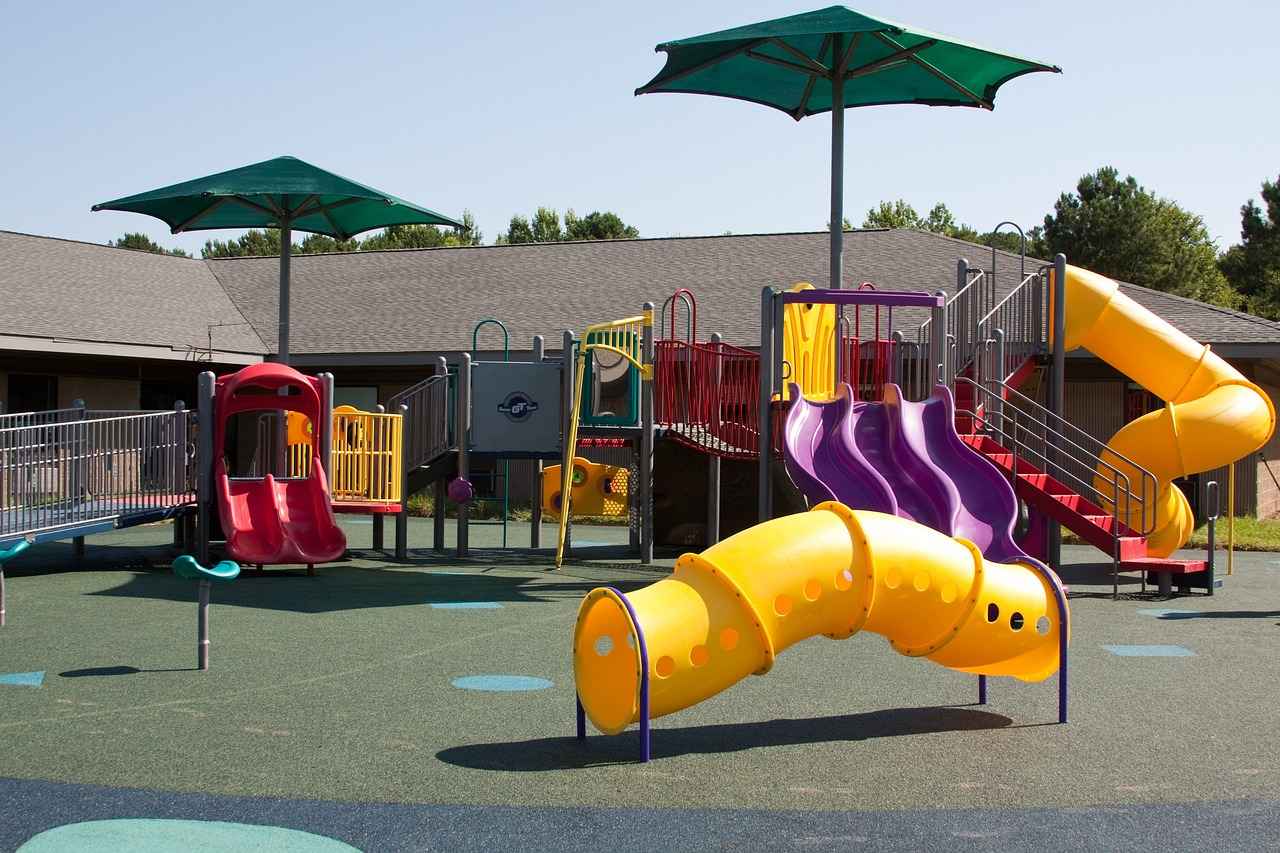This article provides a comprehensive guide for students interested in starting an Audio/Visual (A/V) club in middle school, covering essential steps, tips, and resources for success. An A/V club can be a fantastic opportunity for students to explore their creativity while developing valuable skills in technology, communication, and teamwork.
An A/V club focuses on audio and visual technology, allowing students to explore filmmaking, photography, and sound production. Starting one fosters creativity, teamwork, and technical skills among young tech enthusiasts. As students engage with various media, they not only learn about technology but also about storytelling and collaboration.
Building a successful A/V club begins with gathering interest among peers. Effective strategies include:
- Hosting informational meetings
- Utilizing social media platforms
- Collaborating with teachers to attract potential members
Engaging promotional materials are essential for attracting members. Consider designing eye-catching flyers, social media posts, and announcements to spread the word about the club’s purpose and upcoming meetings. Use bold colors and creative graphics to grab attention.
Leverage school resources such as the bulletin board, morning announcements, and newsletters to reach a wider audience. Collaborating with teachers can also enhance visibility and encourage student participation.
Involving the community can boost interest. Organize events, workshops, or demonstrations that showcase the club’s activities and invite local professionals to share their expertise and experiences. This not only builds excitement but also helps students network with industry experts.
To run an effective A/V club, it’s important to identify necessary equipment and resources. This includes:
- Cameras
- Microphones
- Editing software
- Access to a dedicated space for meetings and projects
Creating a budget for equipment is essential. Consider fundraising options, seeking donations, or applying for grants to ensure the club has the necessary tools for successful projects. Engage members in brainstorming fundraising ideas to foster a sense of ownership.
Planning and executing projects is a key aspect of an A/V club. Projects can range from short films to live events, providing members with hands-on experience and opportunities to showcase their work.
Establishing clear goals and timelines for projects helps keep members focused and motivated. Break down larger projects into manageable tasks to ensure everyone contributes and learns throughout the process.
Showcasing the work produced by club members is vital for building confidence and community. Consider hosting screenings, creating a website, or using social media to highlight projects and achievements. Celebrating successes will inspire members to continue improving their skills.
Creating a supportive environment encourages creativity and collaboration among club members. Implementing team-building exercises and open discussions can help build camaraderie and inspire innovative ideas.
Encouraging constructive feedback among members fosters a culture of improvement. Regularly scheduled critique sessions can help members refine their skills and learn from each other’s experiences, enhancing the overall quality of projects.
Bringing in guest speakers or hosting workshops can provide valuable insights and inspiration. Local filmmakers or audio engineers can share their expertise, motivating members and expanding their knowledge base.
By following these steps and utilizing available resources, students can successfully start and maintain an A/V club that not only enriches their middle school experience but also prepares them for future opportunities in the world of technology and media.

What is an A/V Club and Why Start One?
Starting an Audio/Visual (A/V) club in middle school is an exciting opportunity for students to delve into the world of filmmaking, photography, and sound production. An A/V club not only allows students to explore these fascinating fields but also promotes essential skills such as creativity, teamwork, and technical proficiency. As technology continues to evolve, the demand for skilled individuals in these areas is growing, making an A/V club a valuable addition to any school.
An A/V club is a dedicated group where students come together to learn and experiment with various forms of audio and visual media. This club serves as a platform for students to express their artistic visions while gaining hands-on experience with industry-standard equipment and software. Whether it’s shooting a short film, capturing stunning photographs, or producing high-quality audio content, an A/V club offers a comprehensive learning experience.
Establishing an A/V club can have numerous benefits:
- Foster Creativity: Students can explore their artistic talents and develop unique projects that showcase their skills.
- Encourage Collaboration: Working together on projects helps students learn the importance of teamwork and communication.
- Develop Technical Skills: Members gain valuable experience with cameras, editing software, and sound equipment, preparing them for future opportunities.
- Build Confidence: Presenting their work and receiving feedback helps students grow and build self-esteem.
The benefits of participating in an A/V club extend beyond just technical skills. Students learn to think critically and problem-solve as they navigate the challenges of project planning and execution. They also gain exposure to different career paths in the media industry, which can help them make informed decisions about their futures.
In an A/V club, students can acquire a variety of skills:
- Filmmaking: Understanding the basics of cinematography, scriptwriting, and editing.
- Photography: Learning about composition, lighting, and digital editing techniques.
- Sound Production: Gaining knowledge in sound design, recording, and mixing.
Getting involved in an A/V club is easy! Interested students can:
- Attend informational meetings to learn more about the club’s activities.
- Participate in workshops and hands-on sessions to gain practical experience.
- Collaborate on projects that interest them, whether it’s a documentary, a music video, or a podcast.
In conclusion, starting an A/V club in middle school is a fantastic way for students to explore their passions, develop essential skills, and build lasting friendships. By fostering a supportive and creative environment, an A/V club can inspire the next generation of filmmakers, photographers, and audio engineers.

How to Gather Interest and Build a Team?
Building a successful A/V club begins with gathering interest among peers. This foundational step is crucial for ensuring that the club has a vibrant membership base and diverse ideas. Here are some effective strategies to help you attract potential members and build a strong team.
To kick off your A/V club, consider hosting informational meetings. These gatherings serve as a platform to introduce the club’s vision, discuss the exciting opportunities it offers, and explain how members can get involved. Make sure to create an inviting atmosphere where students feel comfortable asking questions and sharing their thoughts.
- Choose an accessible location for your meetings, such as the school library or a common area, to encourage attendance.
- Utilize engaging presentation methods, such as slideshows or videos, to showcase potential projects and activities.
- Provide light refreshments to create a welcoming environment and encourage students to stay longer.
In addition to meetings, leveraging social media is a powerful way to reach a broader audience. Create dedicated accounts on platforms like Instagram or Facebook to share updates, highlight club activities, and engage with potential members. Regular posts can keep your audience informed and excited about upcoming events.
- Share behind-the-scenes content from club activities to pique interest.
- Encourage current members to tag friends in posts, expanding your reach.
- Use relevant hashtags to attract students interested in technology and media.
Collaborating with teachers is another effective strategy. Many educators are eager to support student initiatives, especially those that promote creativity and technical skills. Reach out to teachers in the arts, technology, or media departments to discuss how they can help promote the club.
- Ask teachers to mention the club during classes or in newsletters.
- Propose joint projects or workshops that can benefit both the club and the curriculum.
Creating promotional materials is essential for attracting members. Design eye-catching flyers and posters to hang around the school. Make sure these materials clearly communicate the club’s purpose, meeting times, and how to join. Utilize bright colors and engaging graphics to draw attention.
Engaging with the community can also boost interest. Consider organizing events, workshops, or demonstrations that showcase the club’s activities. Inviting local professionals to share their expertise can inspire students and demonstrate the real-world applications of A/V technology.
Once you have gathered sufficient interest, it’s time to organize initial meetings and activities. Plan engaging introductory sessions that familiarize members with A/V technology and encourage collaboration. This will create a positive atmosphere where creativity can thrive.
In summary, gathering interest and building a team for your A/V club requires a combination of effective strategies, including hosting informational meetings, utilizing social media, collaborating with teachers, and creating engaging promotional materials. By implementing these tactics, you can successfully attract potential members and establish a vibrant A/V club that fosters creativity and teamwork among young tech enthusiasts.
Creating Promotional Materials
is a fundamental step in attracting members to your A/V club. The right materials can effectively communicate your club’s mission, activities, and the excitement that awaits new members. Here are some strategies to consider when designing your promotional materials:
- Eye-Catching Flyers: Design colorful and engaging flyers that highlight the club’s purpose and upcoming events. Use bold fonts and vibrant images to grab attention. Distribute these flyers around the school, especially in high-traffic areas such as hallways, cafeterias, and bulletin boards.
- Social Media Posts: Leverage popular platforms like Instagram, Twitter, and Facebook to reach a broader audience. Create visually appealing posts that showcase behind-the-scenes activities, member achievements, and upcoming meetings. Use hashtags related to your school and A/V interests to increase visibility.
- Announcements: Utilize the school’s morning announcements to share exciting news about the club. Prepare a brief, engaging script that outlines what the club is about, the benefits of joining, and how interested students can get involved.
- Interactive Online Content: Consider creating a blog or website dedicated to the club. This platform can feature articles, photos, and videos of projects and events. Encourage members to contribute content, fostering a sense of ownership and community.
Visual Appeal is crucial when creating promotional materials. Use high-quality images and graphics that resonate with your target audience. Ensure that the design aligns with the interests of potential members, showcasing the fun and creativity involved in A/V projects.
Another effective strategy is to collaborate with other clubs or organizations within the school. Joint events can amplify your reach and attract students who may not have initially considered joining an A/V club. For instance, partner with the drama club for a film project or with the art club for a photography exhibition.
Feedback and Iteration are also key components of your promotional strategy. After distributing your materials, gather feedback from peers and teachers. This can provide insights into what resonates with potential members and what might need improvement. Be open to adjusting your approach based on this feedback to better meet the interests of your audience.
In conclusion, creating engaging promotional materials is essential for attracting members to your A/V club. By utilizing eye-catching flyers, dynamic social media posts, and effective announcements, you can effectively communicate your club’s mission and activities. Remember to focus on visual appeal, collaborate with other organizations, and seek feedback to continuously improve your outreach efforts. These strategies will help you build a vibrant community of young tech enthusiasts eager to explore the world of audio and visual technology.
Utilizing School Resources
Starting a middle school A/V club can be an exciting venture for young tech enthusiasts. However, to ensure the club’s success, it is crucial to effectively utilize available school resources. This section will explore various strategies that can help maximize visibility and encourage participation among students.
Utilizing school resources is essential for reaching a wider audience. Here are some effective ways to leverage these resources:
- Bulletin Boards: Make use of bulletin boards located in high-traffic areas of the school. Create visually appealing posters that highlight the club’s activities, meeting times, and benefits of joining. Use bright colors and engaging graphics to catch the attention of passersby.
- Morning Announcements: Collaborate with school administration to include club announcements during morning announcements. This is a great way to inform students about upcoming meetings and events, creating a sense of excitement and urgency.
- Newsletters: Many schools distribute newsletters to parents and students. Submitting a regular update about the A/V club can keep the community informed and engaged, encouraging more students to join.
Collaborating with teachers can significantly enhance the club’s visibility and credibility. Here are some benefits of such partnerships:
- Increased Exposure: Teachers can help promote the club in their classrooms, encouraging students who might be interested in A/V technology to join. They can also provide insights into how the club can align with educational goals.
- Access to Resources: Many teachers have access to equipment and facilities that the A/V club can utilize. For instance, art or media teachers might have cameras, editing software, or even studio space that can be invaluable for club projects.
- Guest Lectures and Workshops: Teachers can facilitate connections with guest speakers or organize workshops, allowing club members to learn from experienced professionals in the field.
Encouraging student participation is vital for the club’s growth and sustainability. Here are some strategies to consider:
- Engaging Activities: Plan fun and interactive activities that pique students’ interest. This could include hands-on workshops, film screenings, or contests that encourage creativity and collaboration.
- Incentives: Consider offering incentives for participation, such as recognition in school newsletters or awards for outstanding contributions. This can motivate students to get involved and stay engaged.
- Feedback Mechanisms: Create opportunities for members to provide feedback on club activities and suggest new ideas. This not only empowers students but also helps tailor the club’s offerings to their interests.
In conclusion, leveraging school resources and collaborating with teachers can significantly enhance the visibility and appeal of a middle school A/V club. By utilizing bulletin boards, morning announcements, and newsletters, and by fostering strong relationships with educators, students can create a vibrant and engaging environment that encourages participation and creativity.
Engaging with the Community
is a crucial aspect of building a successful A/V club. By actively involving community members, the club not only gains visibility but also fosters a sense of collaboration and shared learning. Here are some effective strategies to enhance community engagement:
- Organize Events: Hosting events such as film screenings, photography exhibitions, or sound production showcases can attract local attention. These events serve as a platform for club members to present their work while inviting community members to participate and provide feedback.
- Workshops and Demonstrations: Conducting workshops where club members teach specific skills, such as video editing or sound mixing, can be an excellent way to engage the community. Inviting local professionals to lead these sessions not only enriches the learning experience but also helps establish connections with industry experts.
- Community Collaborations: Partnering with local businesses, schools, or community centers can provide additional resources and support for the club. For instance, a local theater might be willing to host a film festival featuring student work, creating a community event that highlights the talents of young filmmakers.
- Guest Speakers: Inviting professionals from the audio/visual industry to speak at club meetings can inspire members and provide valuable insights. These speakers can share their experiences, offer career advice, and discuss the latest trends in technology, helping to bridge the gap between education and real-world applications.
To maximize the impact of these initiatives, consider the following:
1. Promote Events Effectively: - Use social media platforms to create buzz. - Distribute flyers in schools and local businesses. - Leverage community bulletin boards to reach a wider audience.2. Create a Welcoming Atmosphere: - Ensure events are inclusive and accessible to all community members. - Offer refreshments or activities to encourage participation.3. Gather Feedback: - After events, seek feedback from attendees to understand what worked well and what could be improved. - Use this feedback to refine future events and workshops.
By actively engaging with the community, the A/V club can cultivate a supportive environment that nurtures creativity and collaboration. This involvement not only enhances the club’s visibility but also helps members develop vital skills that will benefit them in their future endeavors. Ultimately, a strong connection with the community can lead to increased interest and participation, ensuring the club’s long-term success.
Organizing Initial Meetings and Activities
When it comes to starting a successful A/V club, the initial meetings play a pivotal role in setting the tone and direction for the group. Once interest is established, it becomes essential to organize these meetings effectively. Here are some suggestions to ensure that your initial gatherings are both engaging and productive.
Initial meetings serve as the foundation for the club’s culture and dynamics. They provide an opportunity for members to connect, share their interests, and establish a sense of community. Additionally, these meetings can help to:
- Introduce Club Objectives: Clearly outline the goals and vision of the club.
- Encourage Participation: Foster an environment where every member feels comfortable contributing.
- Build Team Spirit: Activities can help break the ice and promote camaraderie among members.
To create an inviting atmosphere, consider incorporating a variety of activities during your initial meetings. Here are some ideas:
- Icebreaker Games: Start with fun icebreakers that encourage members to share their interests in A/V technology.
- Hands-On Workshops: Organize mini-workshops where members can try out basic A/V equipment, such as cameras and microphones.
- Group Discussions: Facilitate discussions about favorite movies, music, or technology, allowing members to express their passions.
From the outset, it’s crucial to cultivate a collaborative and creative environment. Here are some tips to achieve this:
- Encourage Team Projects: Assign small group projects that require collaboration, helping members to learn from one another.
- Establish Ground Rules: Set clear guidelines for respectful communication and teamwork to ensure everyone feels valued.
- Utilize Feedback: Foster a culture of constructive feedback where members can share ideas and critiques in a supportive manner.
Incorporating technology into your meetings can enhance engagement. Consider using:
- Interactive Presentations: Use tools like PowerPoint or Google Slides to visually present club goals and upcoming projects.
- Online Polls: Create polls to gather input on activities or projects, allowing members to voice their preferences.
- Social Media Groups: Establish a private group on platforms like Facebook or Discord for ongoing communication and sharing resources.
By carefully planning your initial meetings and activities, you lay the groundwork for a thriving A/V club. Remember to:
- Follow Up: After each meeting, send a recap to members highlighting key points and upcoming events.
- Encourage Input: Regularly solicit feedback on activities to ensure that members feel their voices are heard.
- Adapt and Evolve: Be open to changing the format or focus of meetings based on member interests and suggestions.
Ultimately, the goal is to create a space where young tech enthusiasts can explore their passions, learn from one another, and collaborate on exciting projects. With thoughtful planning and a focus on engagement, your A/V club can become a vibrant community that inspires creativity and innovation.

What Equipment and Resources Are Needed?
Starting an A/V club in middle school can be an exciting venture for young tech enthusiasts. However, to ensure its success, it is crucial to understand what equipment and resources are needed. This section will explore the essential tools and facilities required to run an effective A/V club.
To effectively operate an A/V club, identifying the necessary equipment and resources is vital. This includes:
- Cameras: High-quality cameras are essential for capturing video and images. Consider investing in digital cameras or even smartphones with advanced camera capabilities.
- Microphones: Good audio quality is crucial. Invest in various types of microphones, such as lavalier, shotgun, and handheld, to accommodate different recording scenarios.
- Editing Software: Access to reliable editing software is important for post-production. Options like Adobe Premiere Pro, Final Cut Pro, or free alternatives like DaVinci Resolve can greatly enhance the club’s projects.
- Lighting Equipment: Proper lighting can dramatically improve video quality. Simple LED lights or softboxes can help create the right ambiance for filming.
- Tripods and Stabilizers: To ensure steady shots, invest in tripods and stabilizers. These tools help maintain professional-quality footage.
- Computers and Storage: Having computers with adequate processing power is essential for editing. Additionally, ample storage solutions, such as external hard drives, are necessary to manage large video files.
- Dedicating Space: It’s important to have a designated space for meetings and projects. This could be a classroom or a media room equipped with the necessary tools.
Ensuring that all these resources are available will provide a solid foundation for the A/V club. However, managing these resources effectively is equally important.
Once the equipment is acquired, proper management is essential for longevity and efficiency:
- Regular Maintenance: Schedule regular checks on all equipment to ensure everything is functioning correctly. This includes cleaning cameras, checking microphone connections, and updating software.
- Creating an Inventory: Maintain an inventory list of all equipment. This helps track what is available and what might need to be replaced or repaired.
- Training Members: Train club members on how to use the equipment properly. This not only ensures safety but also maximizes the potential of each tool.
- Establishing Guidelines: Set clear guidelines for borrowing and returning equipment. This helps prevent loss and damage, ensuring that resources are available for everyone.
Finding the right equipment can sometimes be a challenge. Here are some tips:
- School Resources: Check if your school has existing equipment that can be utilized. Many schools have cameras and microphones available for student projects.
- Community Partnerships: Reach out to local businesses or community centers that may be willing to lend equipment or provide sponsorship.
- Fundraising: Organize fundraising events to gather money specifically for purchasing new equipment. This not only helps acquire resources but also raises awareness about the club.
- Grants and Donations: Look for grants aimed at educational initiatives or ask for donations from local businesses. Many companies are willing to support youth programs.
By identifying and effectively managing the necessary equipment and resources, your A/V club can thrive, providing members with valuable experiences in audio and visual technology.
Budgeting for Equipment
When it comes to starting an A/V club, is a fundamental step that cannot be overlooked. Having the right tools is crucial for the success of any project, and a well-planned budget ensures that the club can acquire the necessary resources to thrive.
First, it’s important to identify the essential equipment needed for the club’s activities. This typically includes cameras, microphones, tripods, and editing software. Each item plays a vital role in enabling members to explore various aspects of audio and visual production. Once you have a clear understanding of what is required, you can begin to estimate the costs associated with each piece of equipment.
One effective strategy for funding your A/V club is to explore fundraising options. Organizing events such as bake sales, car washes, or movie nights can not only raise money but also foster community involvement. Additionally, consider setting up a crowdfunding campaign online to reach a broader audience. Platforms like GoFundMe or Kickstarter can be excellent avenues to gather support from friends, family, and local businesses.
Another avenue to explore is seeking donations from local businesses or community members. Many companies are willing to support educational initiatives, especially those that promote creativity and technology. Prepare a concise proposal outlining the club’s mission, goals, and how their contributions will make a difference. This approach not only helps in acquiring funds but also builds relationships within the community.
Applying for grants is another viable option to secure funding for your A/V club. Research local, state, or national grants that are available for educational programs, technology initiatives, or youth development. Websites like Grants.gov provide a comprehensive database of available grants. Ensure that your application clearly outlines the purpose of the club, the benefits it will provide to students, and how the funds will be utilized.
In addition to these methods, consider establishing partnerships with local organizations or educational institutions. Many universities have programs that support high school and middle school initiatives, and they may be willing to lend equipment or provide mentorship. These collaborations can enhance the club’s resources and provide valuable insights from experienced professionals.
Finally, maintaining a flexible budget is crucial. As the club evolves, new opportunities may arise that require additional funding. Regularly reviewing and adjusting the budget will help ensure that the club remains financially viable while also adapting to the needs of its members.
In conclusion, effective budgeting for equipment is essential for the success of an A/V club. By exploring fundraising options, seeking donations, applying for grants, and establishing partnerships, the club can secure the necessary resources to create engaging and impactful projects. With a solid financial foundation, members will be empowered to unleash their creativity and enhance their skills in audio and visual technology.
Utilizing School and Community Resources
When embarking on the journey to establish a successful A/V club, one of the most crucial aspects to consider is utilizing existing resources. Many schools are equipped with valuable assets that can significantly benefit your club. This not only includes physical equipment but also the expertise and support from local businesses and community centers. Let’s explore how to effectively leverage these resources to enhance your A/V club’s capabilities.
Schools often have a variety of resources available that can be tapped into for your A/V club. These resources may include:
- Audio/Visual Equipment: Many schools have cameras, microphones, and projectors that can be borrowed for club activities.
- Dedicated Spaces: Classrooms, auditoriums, or media rooms can serve as meeting spaces for the club.
- Technical Support: Teachers or staff with experience in media production can provide guidance and mentorship.
By utilizing these resources, you can save costs and ensure that your club has access to the necessary tools for success.
In addition to school resources, forming partnerships with local businesses can greatly enhance the capabilities of your A/V club. Here are some ways to engage with the community:
- Equipment Donations: Local businesses may be willing to donate or lend equipment that they no longer use, such as cameras or editing software.
- Expertise and Training: Collaborating with professionals in the field can provide club members with invaluable training and insights. Consider reaching out to local filmmakers or sound engineers.
- Sponsorship Opportunities: Businesses may also be interested in sponsoring events or projects, providing financial support in exchange for advertising opportunities.
These partnerships not only provide resources but also foster a sense of community involvement and support for the club.
Community centers often have programs and resources that can be beneficial for your A/V club. Here’s how to engage with them:
- Workshops and Events: Many community centers host workshops that can provide hands-on experience in filmmaking or sound production.
- Collaboration on Projects: Partnering with community organizations for events can provide real-world experience and exposure for club members.
- Access to Facilities: Some community centers have dedicated spaces for media production that can be used for club activities.
By engaging with these organizations, your A/V club can broaden its reach and enhance its learning opportunities.
When reaching out to schools and local businesses, it’s essential to have a clear plan. Here are some tips:
- Prepare a Proposal: Create a detailed proposal outlining the goals of your A/V club and how the partnership can be mutually beneficial.
- Be Professional: Approach potential partners with professionalism and respect to establish a positive relationship.
- Follow Up: After initial contact, be sure to follow up to express gratitude and maintain open lines of communication.
Establishing these connections can lead to fruitful partnerships that enhance the resources available to your A/V club.
Utilizing existing school and community resources is a vital strategy for building a successful A/V club. By exploring partnerships with local businesses and community centers, you can significantly enhance your club’s capabilities and provide members with valuable experiences. Remember, collaboration and resource-sharing are key components of a thriving A/V club.

How to Plan and Execute Projects?
Planning and executing projects is a fundamental aspect of any A/V club. These projects not only enhance technical skills but also provide members with the opportunity to express their creativity and work collaboratively. From short films to live events, the range of projects can be vast, each offering unique experiences and challenges.
Effective project planning is crucial for several reasons:
- Structure: A well-structured plan helps in organizing tasks and assigning roles, ensuring that everyone knows their responsibilities.
- Time Management: Setting deadlines keeps the project on track and helps members manage their time efficiently.
- Skill Development: Working on projects allows members to learn new skills and apply them in real-world scenarios.
The projects undertaken by A/V clubs can vary significantly. Here are some popular options:
- Short Films: Members can collaborate to write, direct, and produce original short films, exploring various genres.
- Documentaries: Creating documentaries on topics of interest allows members to research, interview, and present their findings creatively.
- Live Events: Organizing live events such as talent shows or film screenings can enhance logistical and technical skills.
- Promotional Videos: Producing videos to promote school events or initiatives can provide practical experience in marketing and communication.
To ensure successful project execution, follow these essential steps:
- Define the Project Scope: Clearly outline what the project will entail, including objectives and deliverables.
- Establish a Timeline: Create a realistic timeline with milestones to track progress.
- Assign Roles: Delegate tasks based on members’ strengths and interests to foster engagement and accountability.
- Budgeting: Determine the budget required for equipment, materials, and any other expenses. Consider fundraising or seeking sponsorships if necessary.
- Execution: Begin the project, ensuring regular check-ins to monitor progress and address any challenges that arise.
Once projects are completed, showcasing the work is essential for building confidence and community within the club. Here are some effective ways to do this:
- Screenings: Host events where members can present their projects to peers, family, and the school community.
- Online Platforms: Create a dedicated website or social media page to share videos, behind-the-scenes content, and member testimonials.
- Competitions: Participate in local or national competitions to give members a platform to gain recognition for their hard work.
Creating a culture of feedback is vital for growth. Regular critique sessions can help members refine their skills and learn from each other. Encourage constructive criticism and celebrate successes to maintain motivation.
In conclusion, planning and executing projects within an A/V club is not just about the end product, but also about the journey of learning, collaboration, and creativity. By providing structured opportunities for members to engage in diverse projects, clubs can foster a vibrant community of aspiring filmmakers, sound engineers, and creative thinkers.
Setting Project Goals and Timelines
Setting clear goals and timelines is crucial for the success of any project, especially in an A/V club where collaboration and creativity thrive. When members understand the objectives of a project, they are more likely to stay focused and motivated throughout the process.
Establishing specific goals helps members grasp the project’s purpose and desired outcomes. Goals serve as a roadmap, guiding the team in their efforts. For instance, if the club aims to produce a short film, defining goals such as the film’s theme, target audience, and completion date ensures everyone is aligned and working towards the same vision.
Timelines are vital in managing the pace of the project. When creating a timeline, consider the following:
- Identify Key Milestones: Break the project into significant phases, such as pre-production, filming, and post-production.
- Assign Deadlines: Set realistic deadlines for each milestone to keep the project on track.
- Monitor Progress: Regularly check in with team members to assess progress and make adjustments as needed.
To enhance participation and learning, larger projects should be divided into smaller, manageable tasks. This approach allows every member to contribute effectively and develop their skills. For example, in a film project, tasks could include:
- Scriptwriting
- Casting
- Location scouting
- Filming
- Editing
By assigning specific tasks to members based on their interests and strengths, you encourage a sense of ownership and accountability.
When members know what is expected of them, they are more likely to engage fully in the project. Setting clear expectations regarding roles, responsibilities, and deadlines fosters a collaborative environment. Regular meetings can help reinforce these expectations and provide a platform for members to share updates, challenges, and ideas.
Recognizing and celebrating milestones can significantly boost morale and motivation. Whether it’s completing a script or finishing the first round of filming, taking the time to acknowledge these achievements fosters a positive atmosphere. Consider organizing small celebrations or shout-outs during meetings to keep the energy high.
In summary, setting clear goals and timelines is fundamental in an A/V club. By breaking down larger projects into manageable tasks, encouraging collaboration, and celebrating milestones, club members can stay focused, motivated, and engaged throughout the creative process.
Showcasing Member Work
is an essential aspect of any A/V club, serving as a means to build confidence among members and foster a sense of community. When students see their work being recognized and appreciated, it enhances their motivation and encourages further creativity. Here are some effective strategies to highlight the projects and achievements of club members.
- Host Screening Events: Organizing regular screening events allows members to present their projects to an audience. This could include short films, documentaries, or multimedia presentations. Such events not only celebrate the hard work of the members but also create a platform for constructive feedback.
- Create a Dedicated Website: A website serves as a central hub for all club activities. It can showcase member projects, provide updates on upcoming events, and share resources. Including a blog section where members can write about their experiences and learning can also greatly enhance engagement.
- Utilize Social Media: Platforms like Instagram, Facebook, and Twitter can be powerful tools for showcasing work. Regular posts highlighting projects, behind-the-scenes content, and member spotlights can attract attention and foster a sense of belonging within the club.
- Participate in Local Events: Engaging with the local community by participating in fairs, exhibitions, or festivals can provide a larger audience for the club’s work. Setting up a booth to display projects or even conducting live demonstrations can significantly boost visibility.
- Organize Competitions: Hosting friendly competitions within the club can motivate members to put forth their best work. This not only encourages creativity but also provides an opportunity to showcase the final products to peers and families.
Moreover, it is important to recognize and celebrate achievements, no matter how small. Acknowledging individual contributions during club meetings or through social media shout-outs can boost morale and inspire others to contribute actively.
In addition to showcasing work, fostering an environment where members feel safe to express their ideas and receive constructive feedback is crucial. Regularly scheduled critique sessions can help members refine their skills and learn from each other’s experiences. This not only enhances their technical abilities but also strengthens interpersonal relationships within the group.
Lastly, consider inviting guest speakers from the industry to share their insights and experiences. This not only provides inspiration but also connects club members with professionals who can offer valuable advice on how to present their work effectively in real-world scenarios.
In conclusion, showcasing member work is a multifaceted approach that can significantly enhance the overall experience of being part of an A/V club. By implementing these strategies, clubs can build a strong community, encourage creativity, and develop the confidence of young tech enthusiasts.

How to Foster a Creative and Collaborative Environment?
Creating a supportive environment is essential for fostering creativity and collaboration among club members. When students feel safe and valued, they are more likely to share their ideas and take risks in their creative endeavors. This section outlines effective strategies to cultivate such an environment within your A/V club.
A supportive atmosphere encourages members to express their thoughts without fear of judgment. This sense of security can lead to innovative ideas and solutions that benefit the entire club. When members collaborate freely, they can combine their unique perspectives, resulting in richer and more diverse creative outputs.
Team-building exercises are a fantastic way to strengthen bonds among club members. These activities not only break the ice but also promote trust and understanding. Here are some effective team-building exercises:
- Icebreaker Games: Simple games that encourage members to share fun facts about themselves can help create a friendly atmosphere.
- Collaborative Projects: Assign small group projects where members must work together to achieve a common goal, fostering teamwork and creativity.
- Creative Challenges: Host challenges that require members to think outside the box, such as creating a short film in a limited timeframe.
Open discussions play a crucial role in nurturing creativity. Regularly scheduled meetings where members can share their thoughts, ideas, and feedback can enhance collaboration. Here’s how to facilitate productive discussions:
- Set Ground Rules: Establish guidelines for respectful communication to ensure everyone feels comfortable sharing their opinions.
- Active Listening: Encourage members to practice active listening, which fosters an environment where everyone feels heard and valued.
- Feedback Sessions: Organize critique sessions where members can provide constructive feedback on each other’s work, helping to refine their skills.
Inclusivity is vital for a collaborative environment. Ensure that all voices are heard, regardless of experience level. Here are some strategies to promote inclusivity:
- Diverse Representation: Encourage participation from students with varying backgrounds and interests to enrich the club’s creative output.
- Mentorship Opportunities: Pair experienced members with newcomers to provide guidance and support, fostering a sense of belonging.
- Celebrate Achievements: Acknowledge individual and group accomplishments to build confidence and encourage further participation.
Bringing in guest speakers or hosting workshops can provide valuable insights and inspiration. Local professionals, such as filmmakers or sound engineers, can share their experiences and techniques, motivating members to explore new ideas. Consider organizing:
- Workshops: Hands-on sessions that allow members to learn new skills or techniques related to A/V production.
- Q&A Sessions: Opportunities for members to ask questions and gain insights from industry professionals.
- Networking Events: Facilitate connections between members and local professionals to inspire future collaboration.
By implementing these strategies, your A/V club can create a vibrant, creative, and collaborative environment where every member feels empowered to contribute. A strong foundation built on support and teamwork will not only enhance the club’s projects but also foster lasting friendships and a love for audio and visual arts.
Encouraging Peer Feedback
Encouraging peer feedback is a vital component in any collaborative environment, especially within a middle school A/V club. It not only enhances individual skills but also promotes a culture of continuous improvement and mutual support among members.
Peer feedback serves several essential functions in a creative setting. First and foremost, it allows members to gain different perspectives on their work. When individuals share their projects, they often receive insights that they may not have considered. This diversity of thought can lead to more innovative and polished outcomes.
To establish a routine of constructive feedback, consider scheduling regular critique sessions. These sessions can be held bi-weekly or monthly, depending on the club’s project timeline. During these gatherings, members can present their work and receive constructive criticism in a supportive atmosphere.
- Set Ground Rules: Establishing guidelines for giving and receiving feedback is crucial. Encourage members to focus on specific aspects of the work, such as content clarity, technical execution, and creativity.
- Use a Feedback Framework: Implement a structured framework, such as the “What Went Well, What Could Be Improved” model. This helps keep feedback focused and actionable.
- Encourage Respectful Communication: Ensure that all feedback is delivered in a respectful and constructive manner. This fosters a safe space for sharing ideas and opinions.
Engaging in peer feedback not only helps individuals improve their skills but also strengthens the club as a whole. Here are some of the key benefits:
- Skill Development: Members learn from each other’s strengths and weaknesses, leading to enhanced technical and creative skills over time.
- Increased Confidence: Receiving positive feedback can boost members’ confidence, encouraging them to take risks and explore new creative avenues.
- Team Cohesion: Regular feedback sessions help build camaraderie among members, fostering a sense of community and teamwork.
To maximize the effectiveness of feedback, it’s essential to integrate the suggestions into ongoing projects. After each critique session, encourage members to reflect on the feedback received and make necessary adjustments. This iterative process not only improves the quality of the work but also reinforces the value of the feedback itself.
As members implement feedback and see improvements in their projects, it’s important to celebrate these milestones. Recognizing progress, whether through informal shout-outs during meetings or more formal showcases, can motivate members to continue refining their skills and participating actively in the feedback process.
In conclusion, fostering a culture of constructive peer feedback is essential in a middle school A/V club. By implementing regular critique sessions, encouraging respectful communication, and celebrating improvements, clubs can create an enriching environment that promotes growth and collaboration among young tech enthusiasts.
Inviting Guest Speakers and Workshops
can significantly enhance the learning experience in a middle school A/V club. By bringing in professionals from the industry, students gain access to real-world insights and practical knowledge that can inspire their creativity and technical skills.
One of the primary benefits of hosting guest speakers is the opportunity for students to interact with individuals who have successfully navigated the challenges of the audio and visual fields. Local filmmakers, sound engineers, and media professionals can share their experiences, discussing both the triumphs and the obstacles they faced in their careers. This firsthand knowledge can be incredibly motivating for young tech enthusiasts, as it demonstrates the possibilities that lie ahead in their own journeys.
Additionally, workshops led by these experts can provide hands-on learning opportunities. For instance, a local filmmaker could conduct a workshop on storyboarding and cinematography, allowing students to participate in practical exercises. Such experiences can deepen their understanding of the technical aspects of filmmaking and encourage them to experiment with their own projects. Workshops can cover various topics, including:
- Video Editing Techniques
- Sound Design and Mixing
- Lighting for Film
- Scriptwriting and Storytelling
Furthermore, inviting guest speakers can help students build a network within the industry. Establishing connections with local professionals can lead to future opportunities, such as internships or collaborative projects. This networking aspect is vital for students who aspire to pursue careers in the audio-visual field.
To effectively organize these events, consider the following steps:
- Identify Potential Speakers: Research local professionals who are willing to share their expertise. Reach out to them via email or social media, explaining the purpose of the club and the value their participation would bring.
- Plan the Event Logistics: Choose a suitable date and time, and ensure the necessary equipment is available for presentations or workshops. Promote the event within the school to maximize attendance.
- Engage Students: Encourage club members to prepare questions in advance. This not only fosters engagement but also ensures that students get the most out of the experience.
In conclusion, the inclusion of guest speakers and workshops in a middle school A/V club can be a transformative experience for students. By learning from industry professionals, they can gain valuable insights, enhance their skills, and ignite their passion for audio-visual arts. This approach not only enriches their learning but also helps cultivate a strong sense of community and collaboration within the club.
Frequently Asked Questions
- What age group is suitable for joining an A/V club?
The A/V club is designed for middle school students, typically ages 11 to 14. However, anyone with a passion for audio and visual technology is welcome!
- Do I need prior experience to join the A/V club?
No prior experience is necessary! The club is a great place to learn, collaborate, and explore your interests in filmmaking, photography, and sound production.
- What kind of projects can we work on in the A/V club?
Projects can vary widely, from creating short films and documentaries to recording podcasts or organizing live events. The sky’s the limit when it comes to creativity!
- How can we fund our A/V club activities?
Funding can come from various sources like fundraising events, donations from local businesses, or grants. Get creative and involve the community for support!
- Can we collaborate with other clubs or organizations?
Absolutely! Collaborating with other clubs or local organizations can enhance your projects and provide valuable resources and expertise.




